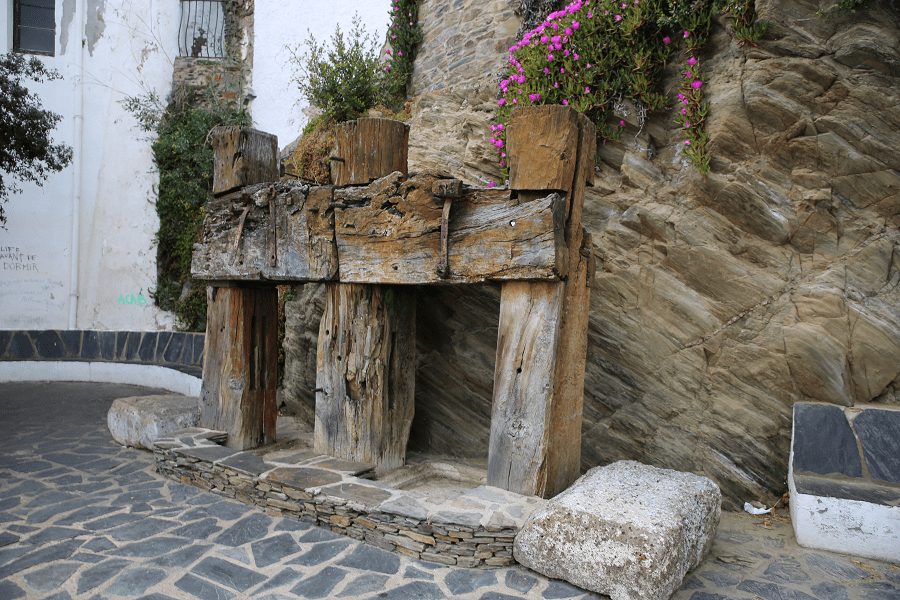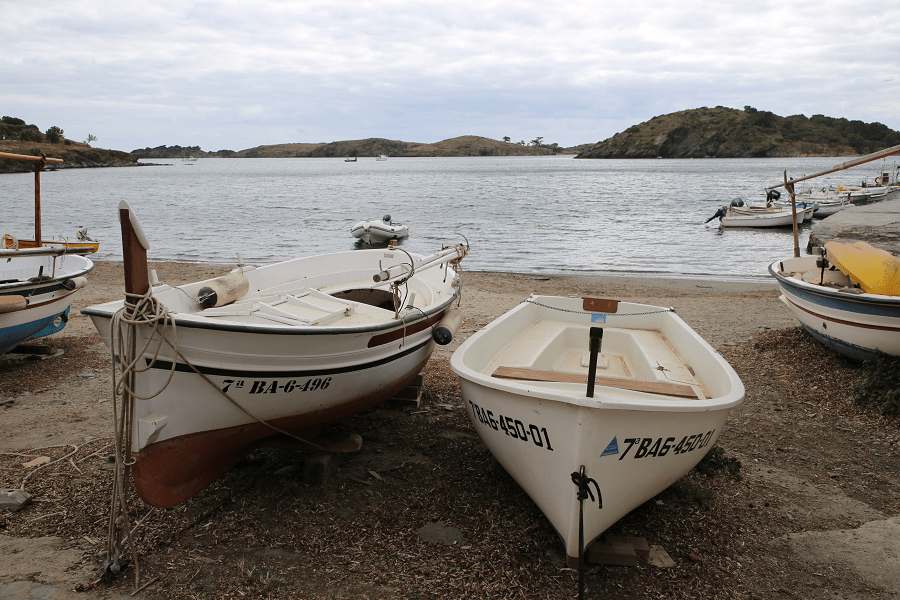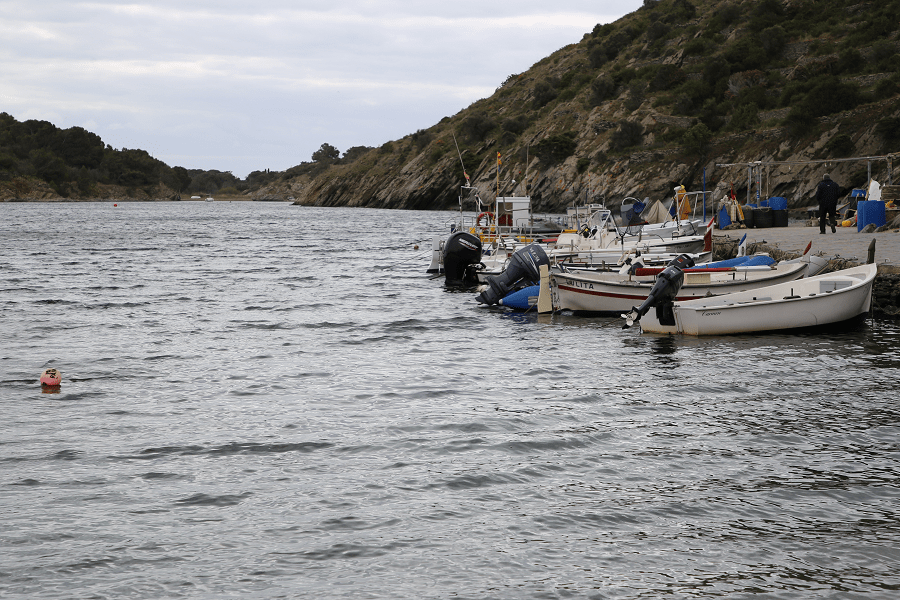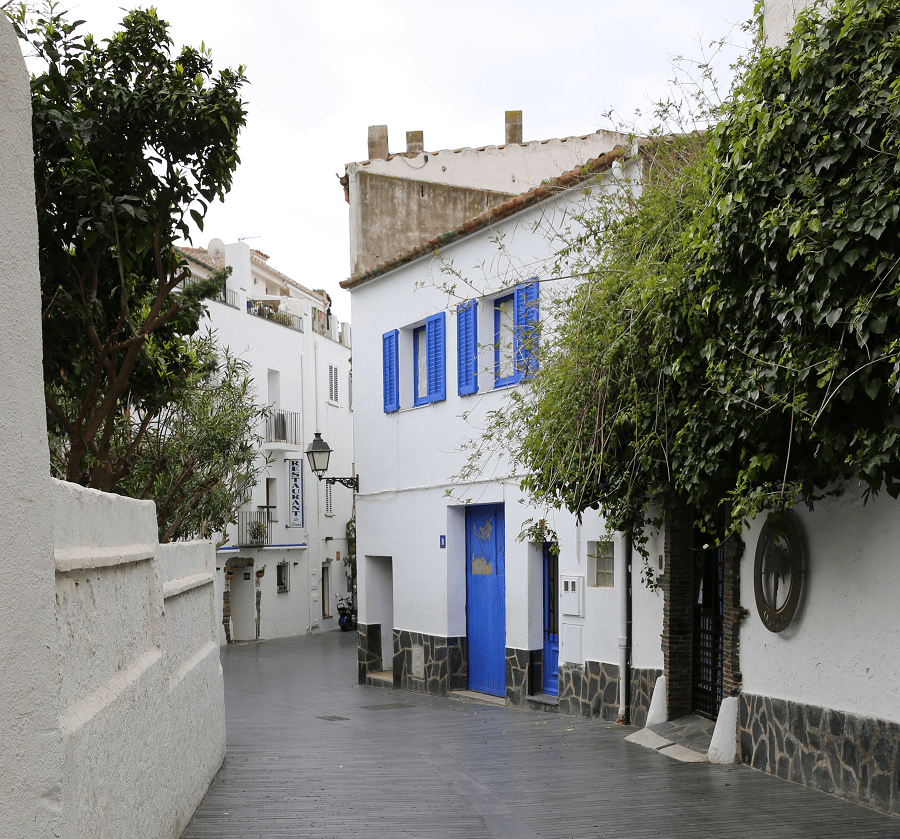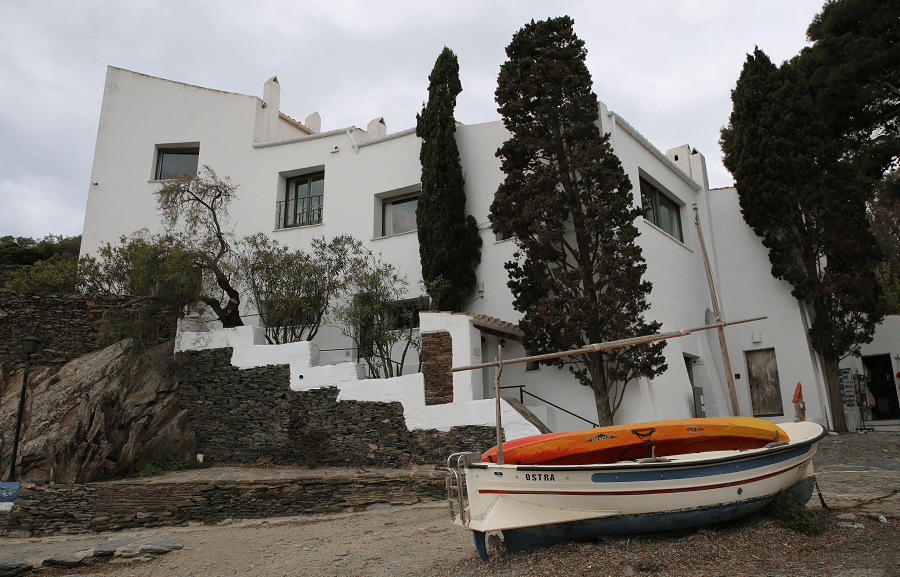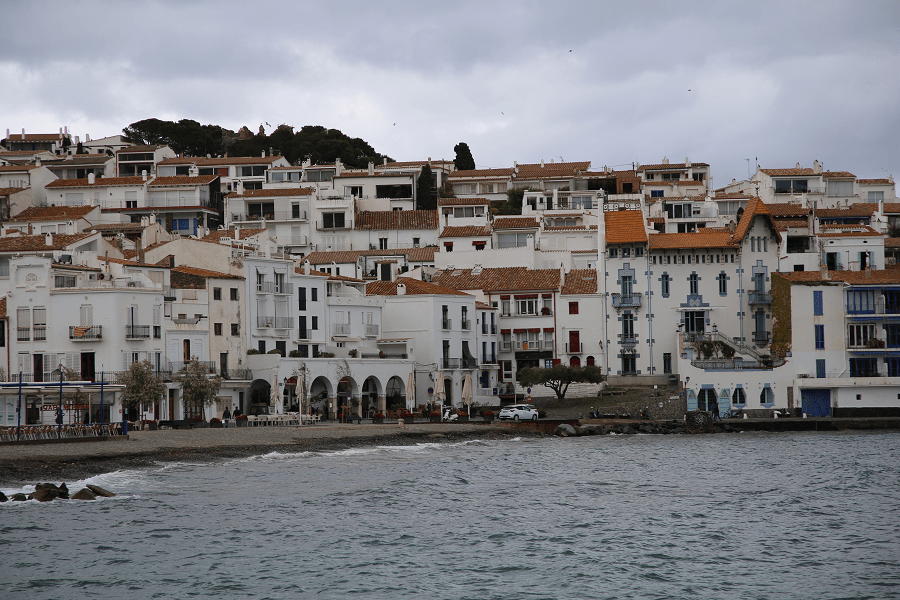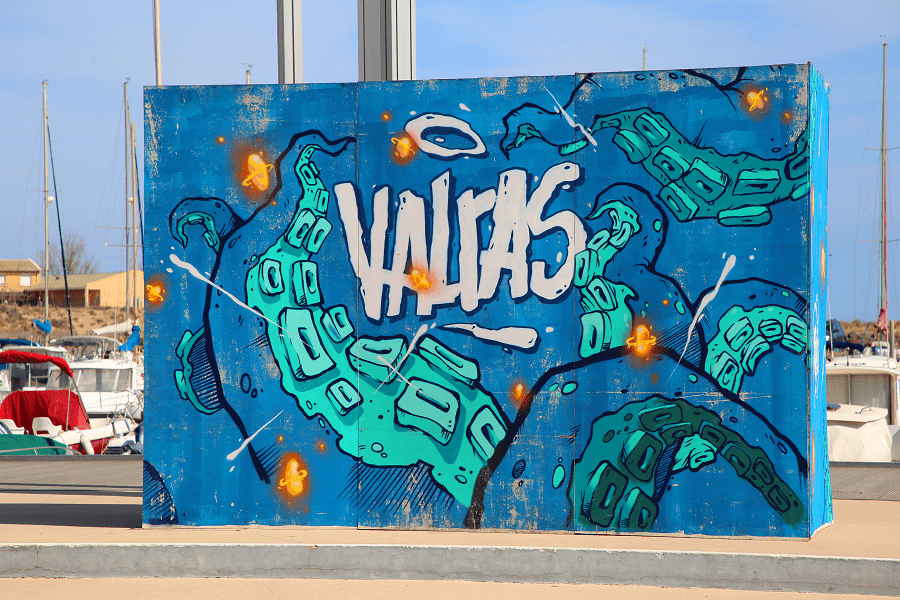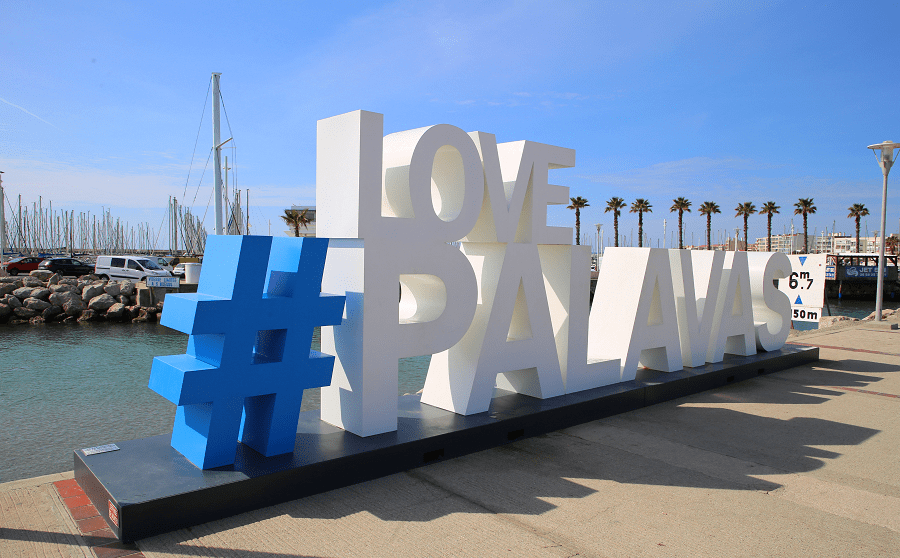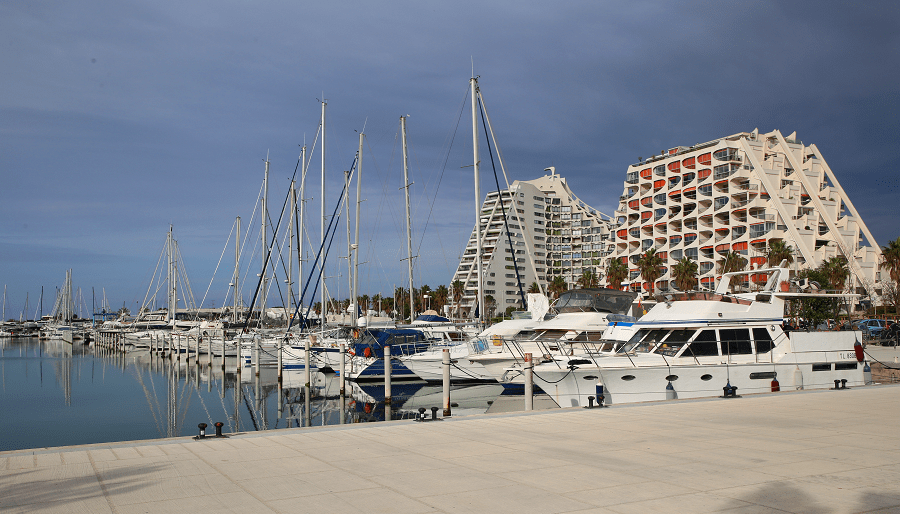Cadaqués (cat. Cadaqués) is a municipality in Spain, part of the province of Girona in the autonomous community of Catalonia. The municipality is part of the Alt Empordà district (comarca). The old town is a protected historical ensemble as a cultural heritage of Catalonia of national interest.
It’s a popular part of the Costa Brava of the Mediterranean resorts of Spain.
It is the easternmost city of Catalonia (also on the Iberian Peninsula) and Alt Empordà.
The municipality occupies most of the east coast of the Cap de Creus peninsula. Isolated by the Peni mountains from the rest of Alt Empordà, Cadaques lived overlooking the sea, but was physically separated from the rest of the region until the late 19th century.
This region is one of the few in Spain where lepidolite is found – a layered mineral, a silicate of a sheet structure from the mica group, which is a secondary source of lithium. It is one of the sources of rare alkali metals, rubidium and cesium. The color and unusual morphology of lepidolite give it a great collection and gemological value. In Catalonia, it is found in Cap de Creus, Cadaques and Sant Feliu de Pallerols (Girona) and Montseny (Barcelona). In the rest of the Iberian Peninsula, it is worth mentioning the region in Valdemierca (Salamanca) as well as in Paredes de Buitrago (Madrid).
Cadaqués is characterized by a number of geological, architectural and ecological elements: gray slate, olive trees and green shrubs, and above all white painted houses.
Economy
Initially, the city’s economy was based on fishing and winemaking. The latter enriched the region in the eighteenth century, but also destroyed it when, at the end of the nineteenth century, the plague of phylloxera destroyed almost all vineyards.
However, the isolation of the village also became a factor in prosperity: at the beginning of the twentieth century, the first tourists began to visit. At the same time, they ignored the most remote places and, as a result, the city retained its “natural” ecology.
History
In 1030, the port of Cadaques was first documented. Later, the castle and the city of Cadaques are often mentioned, and in 1279 – the Parish church. The city was originally part of the monastery of Sant Pere de Rodes and the county of Empuries. Its inhabitants, fishermen, enjoyed the privilege of the Counts of Empuries to form an army only for actions taking place at sea or from the sea. From 1403 the city was ruled by King Martí l’Uma (cat. Martí l’Humà).
Attractions
Castell de Cadaqués is a castle in the municipality of Cadaqués, declared a cultural heritage of national interest. Located in the old town, in Punta de Baluard. It is an ancient bastion that was part of the more complex structure of the castle, occupying this rocky point during the late Middle Ages. A semi-cylindrical tower and parts of the walls next to it have been preserved from the old building. Thus, the current structure is the result of a mixture of medieval remains and later architectural additions.
The completed castle is documented in 1030. It is believed to have been in the same place as the round tower called “Torre de sa fusta es Baluard”.
Castell de Sant Jaume is a fortress in the municipality of Cadaqués, declared a cultural heritage of Catalonia of national interest. Located on the hill of the Three Crosses or Sant Jaume, northeast of the old city. It is a small fortress overlooking the Gulf of Cadaqués, similar to a large tower. The building has a square floor plan with four small terraces, also square, that protrude to form bastions. The entrance to the complex is through a narrow arched door. Two walls retain a crown of triangular battlements, while in other sectors only the completely collapsed roof is visible. There are three levels of small loopholes and several tiled windows. Cladding material – slate.
The House-Museum of Salvador Dalí (cat. Casa-Museu Salvador Dalí) is a small fishing lodge in Portlligat (cat. Portlligat), where Salvador Dali lived and worked regularly from 1930 until Gala’s death in 1982. It is currently a museum run by the Gala Salvador Dali Foundation.
In 1930, due to a break in relations with his father, attracted by the landscape, light and isolated places, Salvador Dali decided to leave Paris and look for his own home in Portlligat. With 20,000 French francs advanced to him by Viscount Noal in exchange for the painting “The Old Age of Guillaume Tell”, Dali bought a fishing hut from the widow of a local sailor Lydia Noguer and settled there.
The Cadaqués Museum (Cat. Museu de Cadaqués) is an art museum located in the historic center of the city that gave it its name. Initially, the museum did not have a permanent collection, although there were long-term exhibitions often associated with the city’s activities or artistic history, including exhibitions by Salvador Dali and Pablo Picasso. Over time, its permanent collection has been expanded with works by artists associated with the city, such as Ramon Pichot i Gironès.
Galeria Cadaqués is an art gallery in Cadaqués, created in 1973 by the Italian-Swiss architect Lanfranco Bombelli with the aim of popularizing new trends in world contemporary art in Catalonia. In the 70s and 80s, the gallery was a pole of attraction and artistic creativity in Catalonia. World famous artists such as Dieter Roth, Marcel Duchamp, David Hockney, Joseph Beuys, Richard Hamilton and others passed through it.
The gallery had a resounding success until Bombelli closed it in 1997, but six years later, in 2003, art connoisseur Huc Malla, exactly 30 years after its first opening, reopened it under the name Galeria Cadaqués Dos with the approval of Bombelli himself, thus continuing his work to introduce the latest avant-garde art. In recent years, he has exhibited artists such as Tom Carr and Jordi Baron there.
The Cap de Creus barracks (cat. Caserna del cap de Creus) are barracks built on the Cap de Creus promontory, 84 meters above sea level, a few meters west of the Cadaqués lighthouse. The building is included in the List of Architectural Heritage of Catalonia. In coastal cities, especially in the northern regions of the Empordà coast, close to the border and especially in Cadaqués because of its geographic characteristics, smuggling was an important activity until the twentieth century. A detachment of carabinieri Cap de Creus, first of all, mainly focused on the smugglers.
The barracks were abandoned in 1940 at the start of World War II.
Famous people
Returning from New York, Salvador Dali settled in Cadaques. His presence attracted prominent personalities such as García Lorca, Pablo Picasso and Walt Disney.
French and American artist, chess player, art theorist, who stood at the origins of Dada and Surrealism, Marcel Duchamp, had lived here since the summer of 1958 before his death.
Richard Hamilton, popularizer of English pop art and a follower of Duchamp, also frequently visited Cadaqués and exhibited several times in the Cadaqués gallery.
Other famous names associated with Cadaques: Spanish artist Eliseo Meifre, Imperial and Pritzker Prize laureate designer and architector Norman Foster, Spanish sculptor and artist Raphael Bartolozzi, French writer and poet, founder of surrealism, André Breton, and many others …
Culture
The Cadaques Orchestra is a chamber orchestra based in Cadaques. The orchestra was founded in 1988 as a permanent orchestra of the Cadaques Festival. Since then, it has developed into a stable orchestra. Since 1992, the International Conducting Competition of the Cadaqué Orchestra has been held under the patronage of the orchestra.
Gastronomy and restaurants
When it comes to sit down, the people of Cadaqués, like all the people of Empordà, are excellent gourmets.
The fish and seafood of the Cap de Creus are the most popular dishes, and this is not surprising, because the rocky relief and strong sea gusts make the fish rich in taste.
Traditional dishes: seafood paella, sardines, anchovies, sea bream, sea bass, sea urchins, lobster, mussels and many more. Of course, all these dishes can be tasted in different restaurants in Cadaqués, depending on the season. As Catalan writer and journalist Josep Pla i Casadevall said in his book on the city, the local cuisine of Cadaqués changes with the seasons:
“In Cadaques, there are three sea delights: in winter – sea urchins; in spring – mussels; in summer – crustaceans, including lobsters.”
There is one restaurant in the city, included in the Michelin rating: Compartir, Riera Sant Vicenç, 40 – 60 EUR • Modern cuisine.
Shopping
For its size, Cadaques has a large selection of shops, especially when it comes to clothing. This is not surprising when you consider that the village has its own style: a mixture of Mediterranean hippies and Catalan ‘Payés’ with a touch of French elegance. The expression “catalán de payés” literally translates as “Catalan peasant farmer”.
If you’re looking for something out of the ordinary, it’s also worth checking out the tiny shops that sell artisan work, from traditional Catalan wicker baskets to jewelry and pottery.
Beaches
Platja Gran is the central beach of Cadaques, located within the city itself. It is a small pebble beach with a relaxed atmosphere, scenic views, bars and restaurants.
Platja de sa Confitera is located 2 km from the center of Cadaqués and very close to the islet of S’Arenella, in a residential area. Consists of small stones and coarse sand. It is easily accessible on foot from the center of Cadaques.
Platja des Pianc is another small beach located north of the center of Cadaques. Only 40 m long and 10 m wide.
How to get to Cadaques?
By car:
From Figueres – 45 minutes (35.7 km) via C-260 and GI-614
From Girona – 1 hour 15 minutes (75.1 km) via AP-7 (tolls)
From Barcelona – 2 hours 15 minutes (171 km) via AP-7 (tolls)
From Madrid 7 hr 51 min (760 km) via A-2
Main information
Area: 26 sq. km
Coordinates: 42 ° 17 ′ 19 ″ N, 3 ° 16 ′ 40 ″ E
Population: 2,700
Languages: Spanish, Catalan
Currency: Euro
Visa: Schengen
Time: Central European UTC +1
See here best sea and ocean resorts of France and Spain (223 objects)






